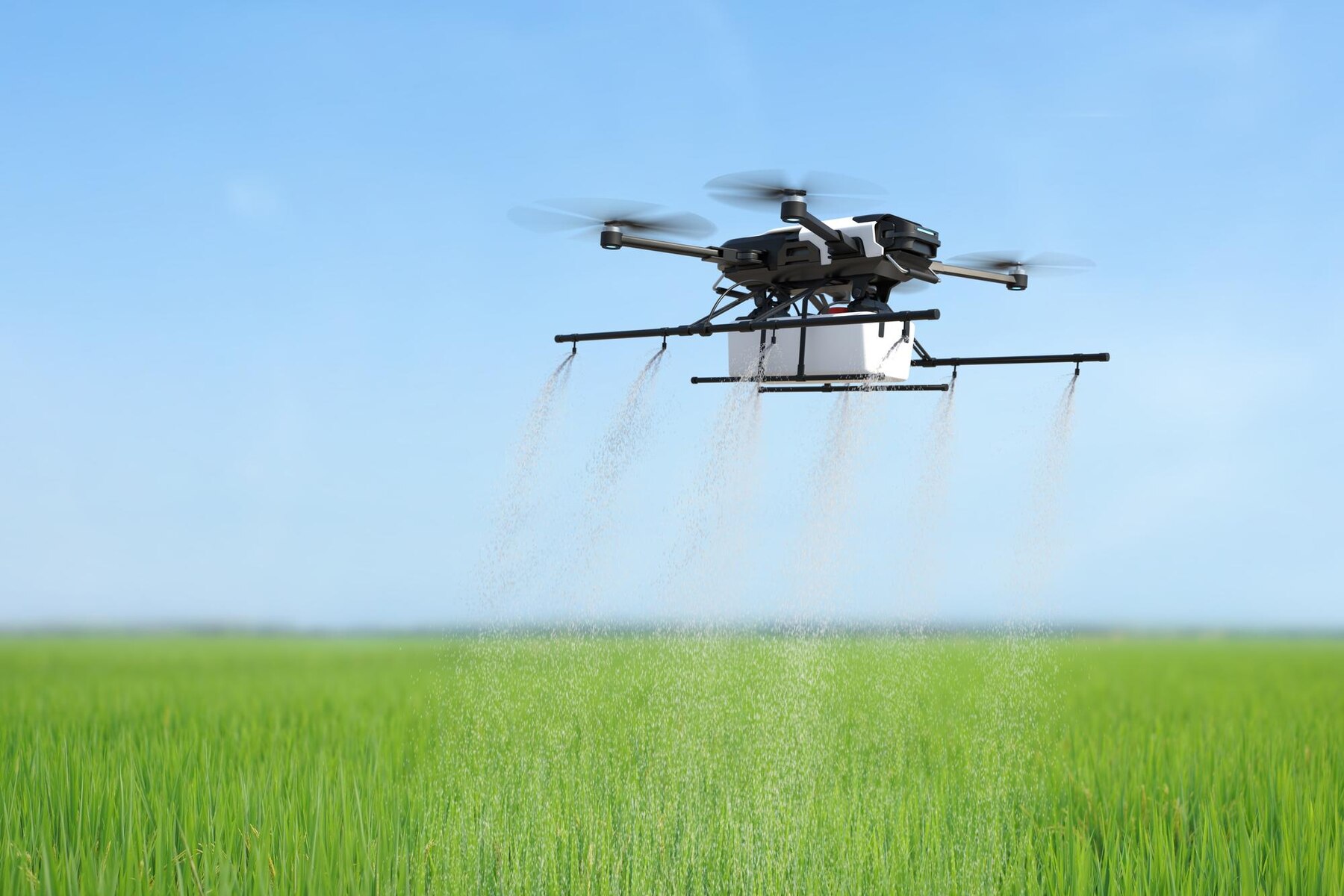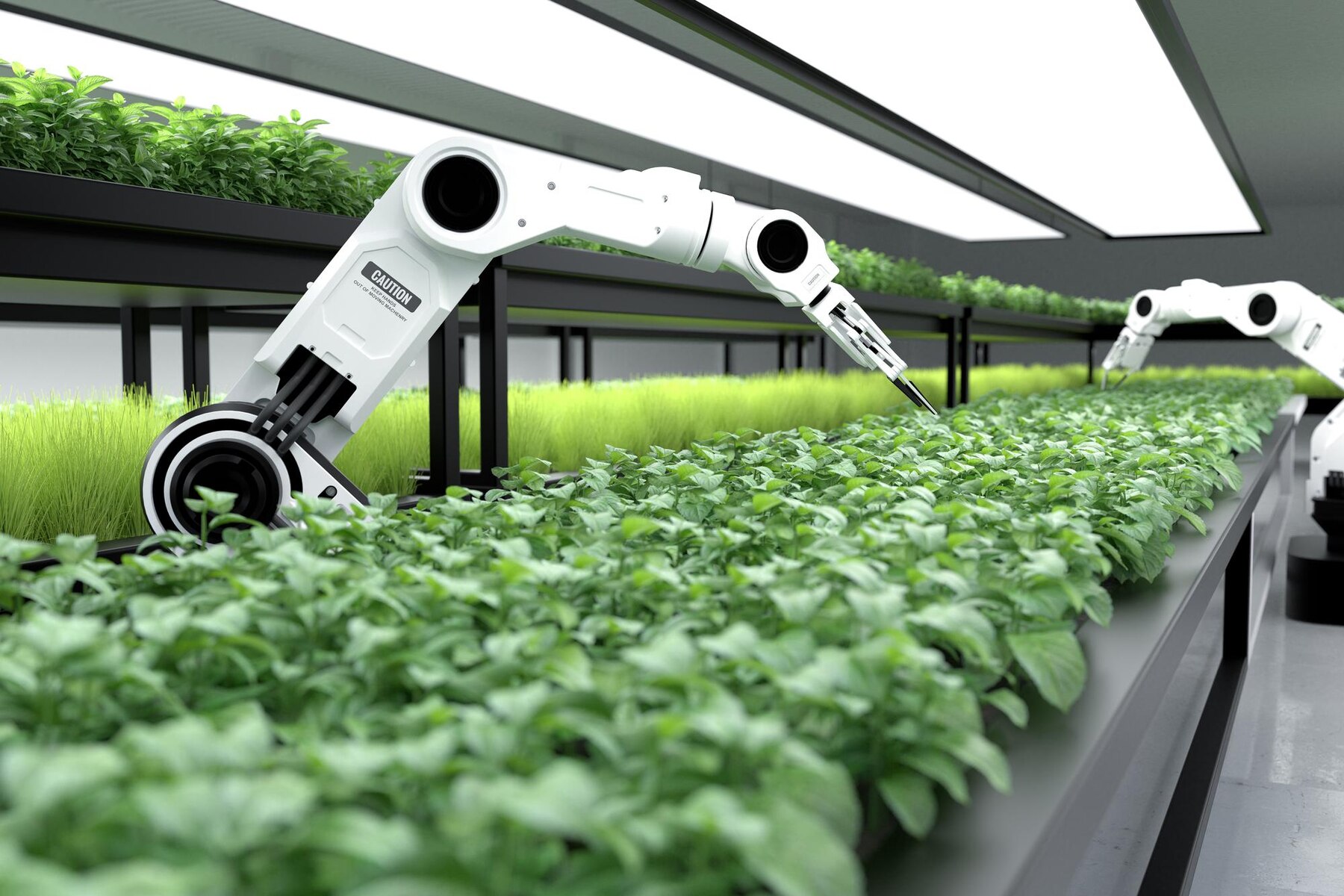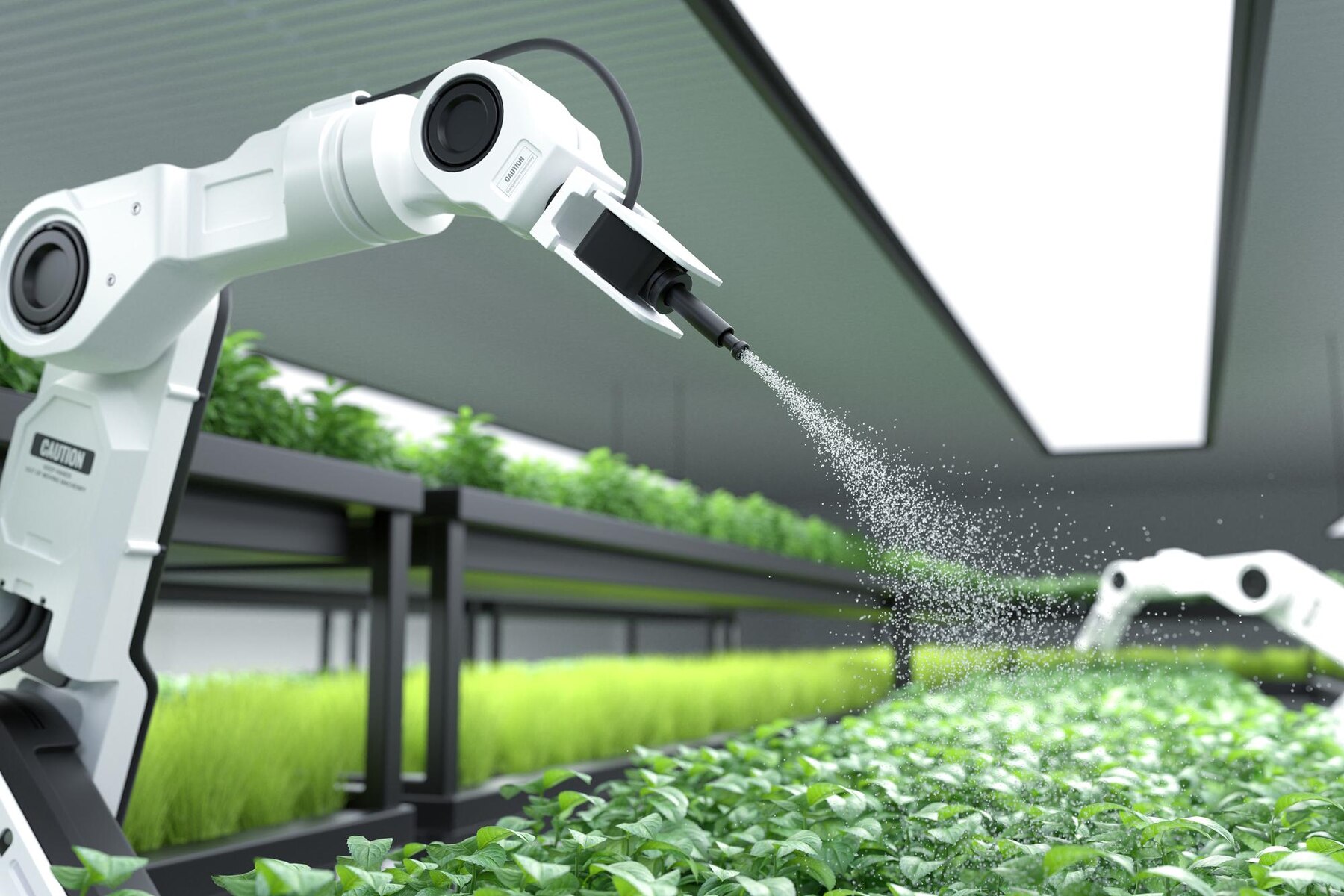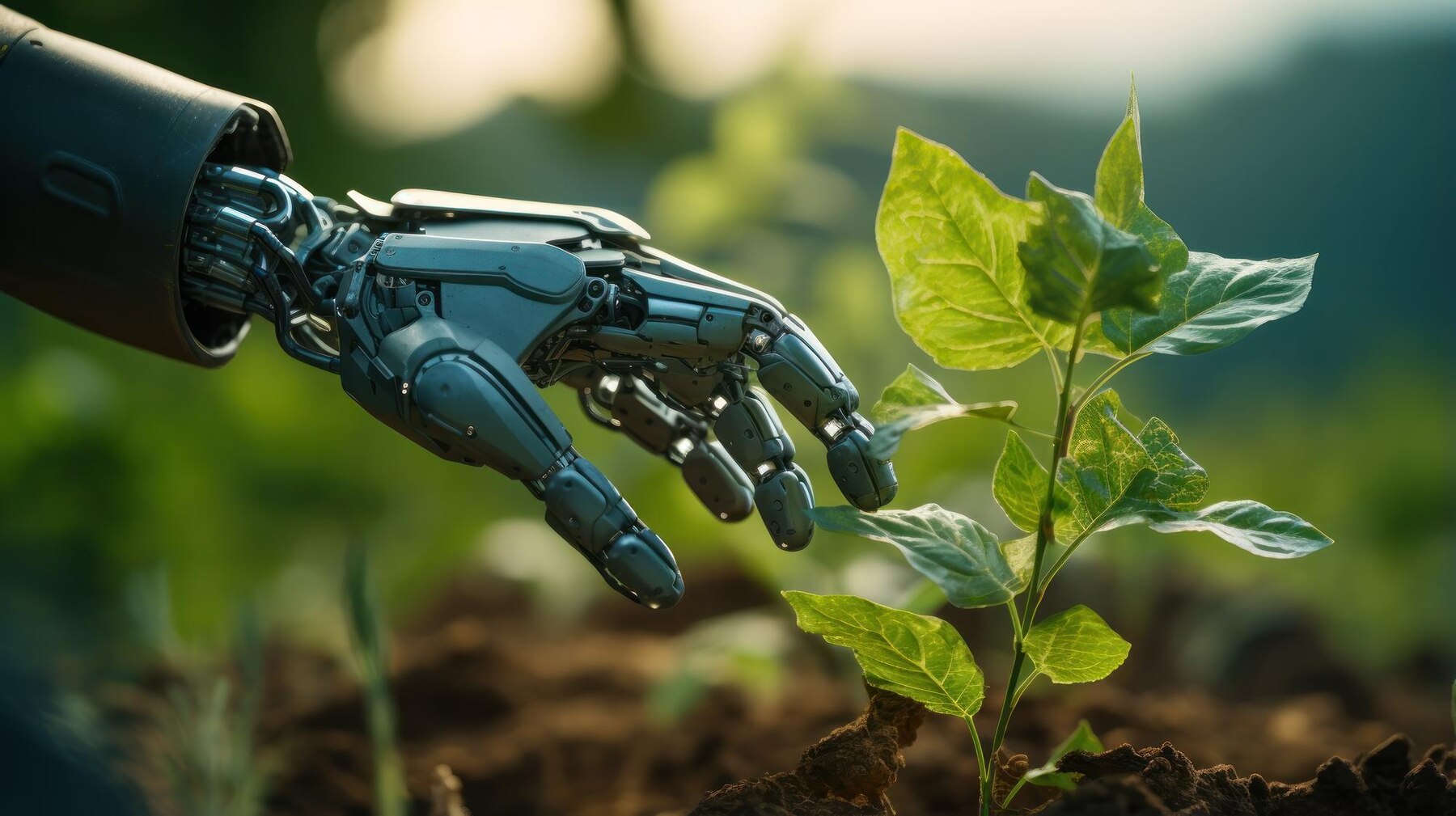
How AI and Robotics Are Changing Agriculture
Agriculture is vital for human civilisation, providing food and stability. Population growth, climate change, and sustainability needs threaten traditional farming. Thankfully, AI in agriculture and robotic farming technology are reshaping the industry. They bring new levels of efficiency, precision, and productivity.
Technology is changing farming. Smart farming boosts crop yields, and robots reduce the need for labour. This article examines how AI and robotics transform agriculture, their benefits, and what lies ahead.

The Role of AI in Agriculture
Artificial Intelligence (AI) is a key player in modern farming. It offers data-driven solutions that improve productivity and sustainability. AI applications in agriculture include predictive analytics, automated monitoring, and precision farming.
Precision Farming with AI
Precision farming uses AI and data analysis to track crops and improve resources. This helps farmers use the right amount of water, fertilisers, and pesticides. So, waste goes down, and efficiency goes up.
- AI-powered drones capture detailed images of crops to spot issues early.
- Satellite imagery and sensors provide real-time soil moisture and nutrient data.
- AI-driven irrigation systems adjust water use based on weather and soil conditions.
AI in Crop and Pest Management
AI helps spot plant diseases and pests before they cause significant harm. Advanced image recognition and deep learning analyse plant health through apps and drones.
- AI tools identify and predict pest outbreaks to prevent crop loss.
- Machine learning detects nutrient deficiencies through image analysis.
- Automated systems suggest the best disease prevention strategies.
AI in Supply Chain and Market Predictions
AI analytics help farmers and businesses make wise choices. They improve decisions on pricing, demand, and distribution.
- AI algorithms forecast crop yield and pricing trends using climate data.
- Smart logistics enhance supply chain efficiency.
- AI chatbots provide farmers with real-time market insights and weather updates.
The Impact of Robotics on Farming
AI helps make better decisions, and robotic farming technology automates tasks. This cuts costs and boosts efficiency. Robotics in agriculture include autonomous tractors, harvesting robots, and innovative irrigation systems.
Autonomous Tractors and Machinery
Self-driving tractors use GPS, AI, and machine vision. They navigate fields alone and do tasks like ploughing and fertilising with precision.
- John Deere’s autonomous tractors lower labour needs and boost efficiency.
- GPS-guided planters ensure even seed distribution for better growth.
- AI-equipped machines adapt to field conditions in real-time.

Harvesting Robots
Harvesting is labour-intensive. Robotic harvesters use AI and computer vision to find and pick ripe crops without damage.
- Agrobot’s strawberry-picking robots speed up harvesting and improve quality.
- AI-powered fruit-picking robots cut human labour costs.
- Autonomous grape harvesters make wine production more efficient.
Automated Weed Control and Spraying Drones
Effective weed management and pesticide application are key for crop health. AI weeders and spraying drones focus on specific spots. This cuts down on chemical use and lessens environmental damage.
- Blue River Technology’s “See & Spray” system accurately removes weeds.
- AI-driven drones apply pesticides only where needed, cutting waste.
- Robotic weeders support organic farming sustainability.
Smart Farming Innovations
New smart farming uses AI, IoT (Internet of Things), and robotics. This mix creates automated, data-driven farms. Some groundbreaking technologies include:
Vertical Farming and AI-powered greenhouses
AI-powered vertical farms and smart greenhouses grow crops in controlled settings. They use less land and water.
- AI monitors temperature, humidity, and CO2 levels for optimal growth.
- Hydroponic and aeroponic systems enhance efficiency.
- Urban farming solutions boost food production in cities.
Blockchain in Agriculture
Blockchain improves transparency and traceability in the agricultural supply chain.
- Smart contracts ensure fair trade and secure transactions.
- Blockchain food tracking prevents fraud and ensures safety.
- Decentralised data sharing gives small farmers access to market insights.
AI-Integrated Livestock Management
AI in livestock farming improves animal health, nutrition, and breeding.
- AI cameras and sensors monitor cattle movement and health.
- Machine learning predicts disease outbreaks, reducing livestock loss.
- Automated feeding systems boost productivity and efficiency.
Challenges and Future of AI and Robotics in Agriculture
Despite AI and robotics’ potential, challenges exist in adoption and scalability.
High Initial Investment Costs
Many farmers, especially in developing areas, struggle with the upfront costs of AI and robotic technologies.
- Governments and agritech firms should offer subsidies and financial support.
- Scalable, low-cost solutions must be developed for small farmers.
Data Security and Privacy Concerns
As agriculture digitises, data privacy becomes crucial.
- It’s essential to ensure cybersecurity for AI platforms.
- Farmers need control over how their data is used and shared.
Workforce Transition and Training
Automation may replace some jobs, requiring farmers and workers to upskill in technology.
- Training programs and AI literacy initiatives will help workers adapt.
- Governments and schools should promote agritech skill development.
Future Prospects: Fully Automated Farms
The future points to fully automated farms, where AI and robotics manage all aspects of farming.
- AI-driven decisions will optimise every farming detail.
- Sustainable practices will thrive through automation.
- AI robotic swarms will collaboratively manage large farms.

The Future of Agriculture: AI and Robotics in Action
AI and robotic farming are changing agriculture. They boost efficiency and promote sustainability. Smart innovations tackle key challenges from precision farming to AI livestock management.
Though barriers like cost and workforce adaptation remain, the future of farming is high-tech. Automated and AI-driven farms are on the way. They will help ensure food security and sustainability for future generations.
Ready to embrace AI in agriculture?
If you’re a farmer, agribusiness owner, or tech fan, now is the time to check out smart farming and robotic technology. Begin by using AI analytics or automated machines in your work. Join the agricultural revolution!
What are your thoughts on AI in agriculture? Share your insights in the comments below!


